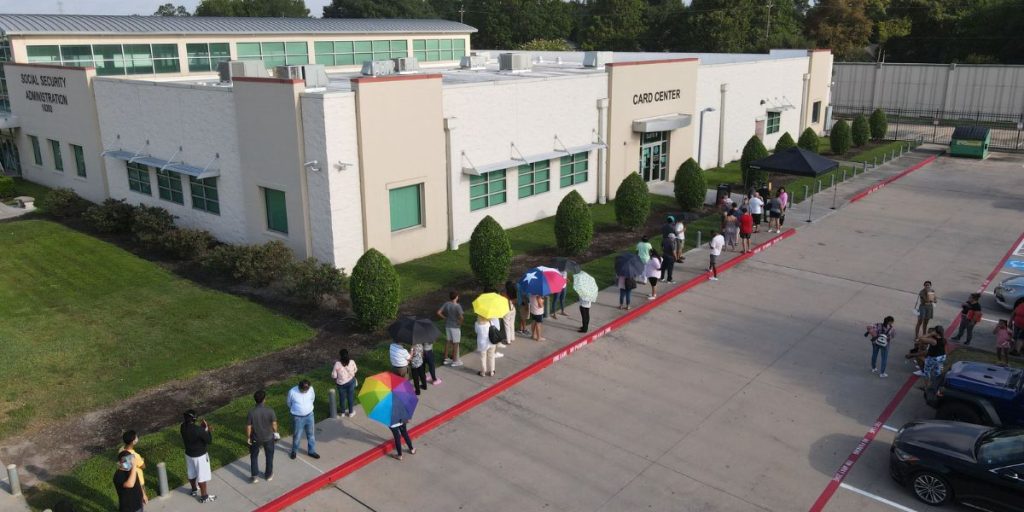In a tale of contrasting economic fortunes, Kern County faces a surge in unemployment, presenting a stark reality for many residents despite overall positive economic indicators. While the broader national economy shows signs of improvement, the challenges within Kern County persist, leaving individuals grappling with the impacts of an increasingly unsteady job market.
Amidst a backdrop of economic uncertainty, recent unemployment figures for Kern County reveal a disconcerting trend. Despite the nation’s general economic recovery, Kern County experiences an unemployment rate of 8.7% in December, marking an increase from the revised 7.8% in November. The situation is exacerbated as Kern County’s unemployment rate surpasses the state average, which also rose to 5.1% in December, up from November’s 4.9%.
Richard Gearhart, an economics professor at Cal State Bakersfield, highlights the economic challenges faced by renters, asserting, “Pretty much anyone who’s a renter is probably in a worse economic position today than they were before COVID-19.” The struggle is palpable, and the reasons behind Kern County’s persistent high unemployment rate are multifaceted.
Key industries such as oil and agriculture, alongside educational challenges, contribute to Kern County’s higher-than-average unemployment. Aaron Ellis, the chief workforce development officer for Kern County, points out, “Our education rate is lower, or a lot of jobs here in Kern County are at minimum wage or just above minimum wage.” These factors, coupled with an increase in the unemployment rate, paint a challenging economic landscape for many residents.

Read more:
- California Lawmaker Proposes Speed Limit Technology to Curb Road Deaths
- Tragedy Strikes as Young Dancer Dies from Mislabeling of Peanuts in Cookies
- New Concealed Carry Law Denied by Another Northern California Count
- U.S. Takes Action to Safeguard Whales Around Offshore Wind Farms
However, amidst the disconcerting job market statistics, there are rays of hope in certain economic indicators. Real gross domestic product (GDP) has experienced a noteworthy increase, indicating positive momentum. Richard Gearhart explains, “GDP is essentially just the total income of a country.” He emphasizes that the recent surge in real GDP is a positive sign, reflecting an economic upturn that the country has not witnessed in several years.
Nevertheless, the dichotomy between macroeconomic growth and individual economic struggles is evident. Gearhart sheds light on the regressive nature of inflation, noting that it disproportionately affects the working class. “Inflation is essentially regressive. It hurts the poor more,” he states. The everyday essentials, such as milk, bread, and eggs, see a surge in prices, exacerbating the financial strain on those already grappling with unemployment.
Aaron Ellis acknowledges the challenges faced by Kern County’s working class but underscores the progress made in recent years. “We always had double-digit unemployment rates in the double digits. So being in the single digits is really good for Kern County.” Despite the strides made, the reality remains that a significant portion of the population continues to navigate the hardships of unemployment and economic uncertainty.
The nuances of Kern County’s economic landscape underscore the need for a comprehensive approach to address both macroeconomic growth and individual financial well-being. As the nation grapples with the aftermath of the COVID-19 pandemic and its far-reaching economic repercussions, localized challenges necessitate targeted interventions. The focus on key industries, wage disparities, and the impact of inflation on essential goods highlights the intricacies that policymakers must consider when crafting solutions.
In the pursuit of economic recovery, Kern County faces the imperative of addressing not only the overall economic trajectory but also the disparities that leave certain segments of the population vulnerable. It is a delicate balancing act that requires a nuanced understanding of local dynamics, effective policy implementation, and a commitment to fostering an inclusive economic environment that benefits all residents.



